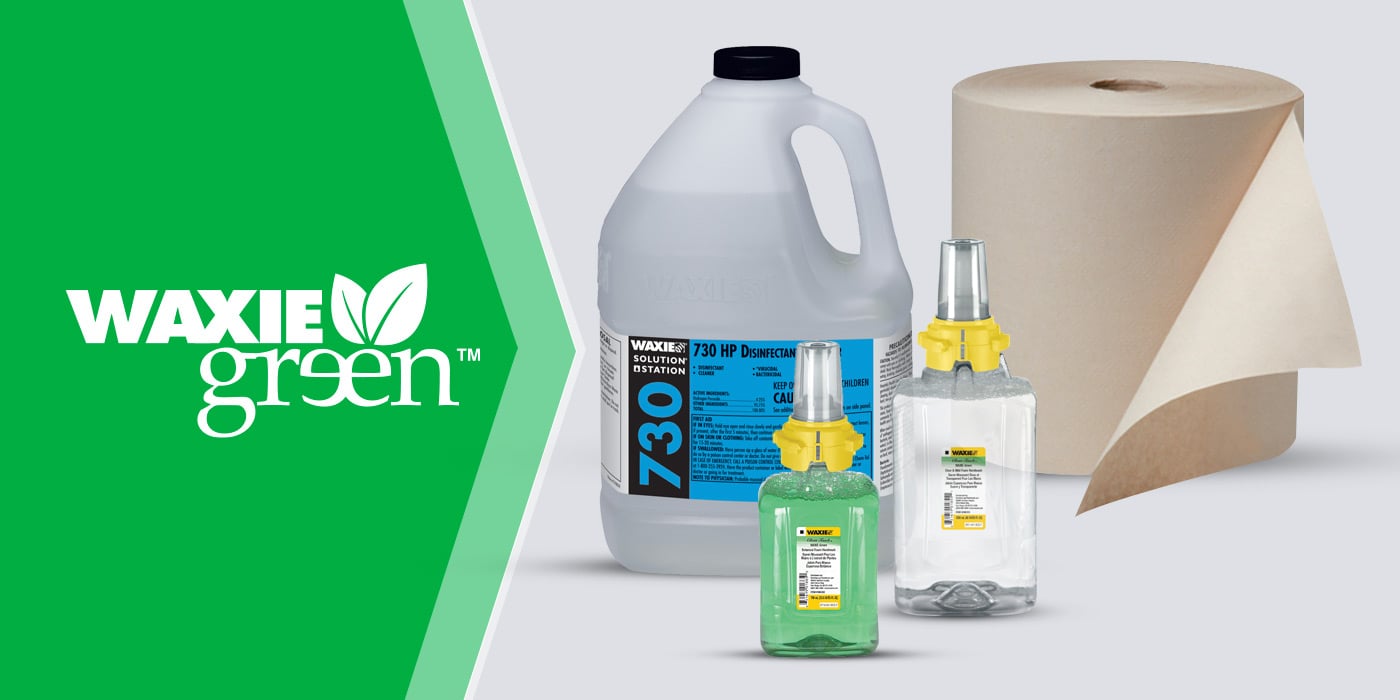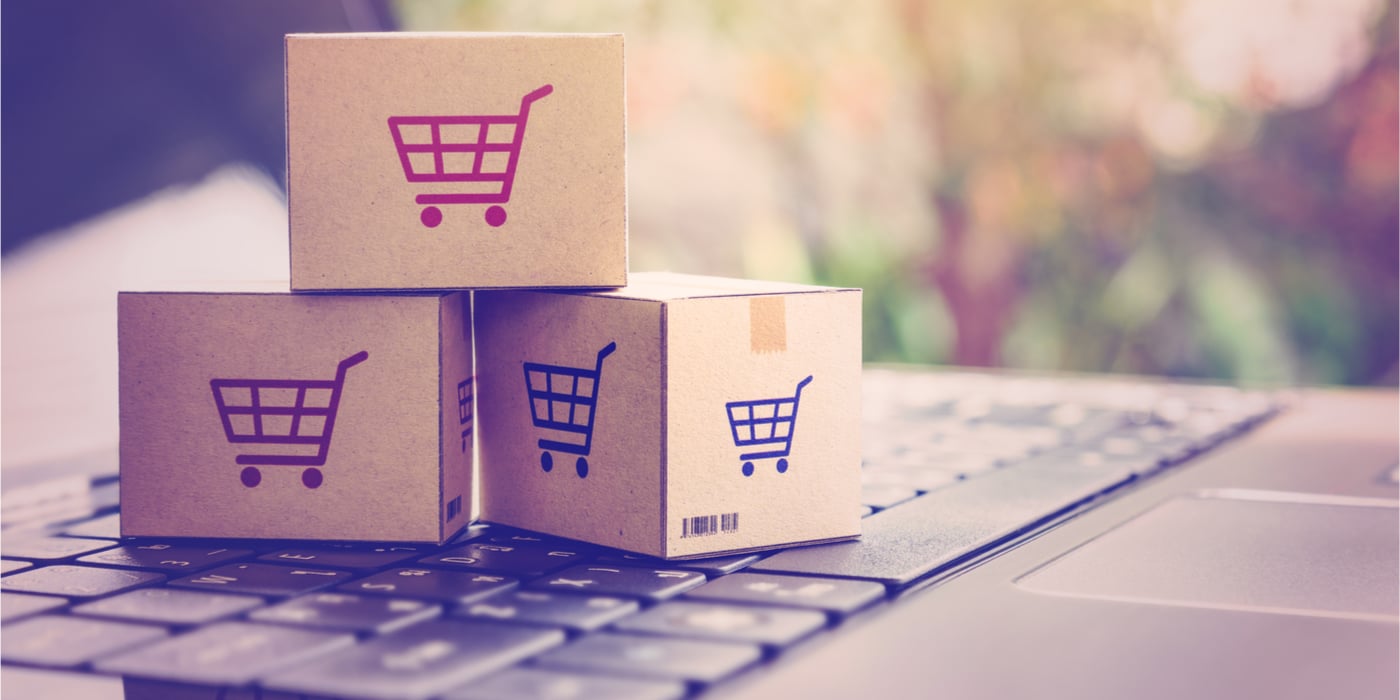By: Caitlin Dimalanta | October 7, 2021
Part five of an ongoing series guiding you on the path to creating a cleaner, healthier, greener and safer building for re-entry and beyond.
In this blog series, we’re breaking down the process of developing a sustainable building program into eight steps, as reflected in our WAXIE GPS® (Green Partner Support™) Program, which progresses from easier to adopt green cleaning procedures and techniques to higher level strategies and stewardship.
In part 5 of this series we will be exploring greener alternatives and more conservation minded methods regarding consumables.
Part 1: How to Develop a Sustainable Building Program
Part 2: Green Cleaning Tools, Equipment & Technology for Healthier Indoor Environments
Part 3: Planning an Efficient Waste Diversion & Recycling Program
Part 4: Put a Greener & Cleaner Foot Forward: Entryway Matting
As the world population continues to grow, the rate at which we consume increases, in addition to potentially causing negative environmental impacts. The relationship between these three components are intertwined. Thoughtfully reflecting on crucial questions such as, “What is our role in this process?” and “How do we individually make an impact?” is a logical place to start.
Consumables are defined as goods that are purchased, used and replaced on a daily basis. A few examples of consumables typically used in buildings include: toilet paper, paper towels, trash can liners, batteries, office supplies, etc. The market for cleaning products is projected to experience an incremental growth of $ 20.13 billion. With robust consumer behaviors within the cleaning industry, the need for reducing our carbon footprint should be considered when developing your facility maintenance plan. Choosing sustainable and renewable solutions reduces the environmental impacts of ongoing consumables.
Methods to Reduce Consumption
Did you know that recycled tissues require 50% less water, 64% less energy and make 74% less air pollution, which not only decreases the cost for companies but also supports sustainability of the environment? Making greener decisions with products that require less resources but still deliver on quality and cost efficiency is a huge way to decrease your facilities consumables.
Ecolabels and certifications help identify which products are more sustainable throughout each step of your cleaning regimen. Look for third-party certifiers such as Green Seal and UL ECOLOGO, FSC, EPA, on product labels as they indicate that those products are tested to meet standards based on category type (hand soaps, paper products, etc.). They also can designate that the product materials contain post-consumer recycled content, that are derived from rapidly renewable resources. Being aware of the labels and certifications on our product purchases—i.e. cleaning chemicals, equipment and accessories—has the potential to cut down on the amount of resources your building uses.
Not only do the products you purchase matter, but how you manage the waste after using them is equally as important. A great place to begin is to develop a solid waste management plan which considers commonly used consumables such as paper, plastic, glass, batteries, cardboard and food waste, and implementing a program which addresses collection and tracking of waste diversion .
Getting LEED® Certified Through Smart Purchasing Habits
If your facility is in the process of becoming Leadership in Energy & Environmental Design (LEED®) certified, monitoring your consumable purchases is a great way to earn points toward your certification. Here are a few requirements to earn points by the U.S. Green Building Council in the LEED® :
- Purchases contain at least 10% post-consumer and/or 20% post-industrial material
- Purchases contain at least 50% rapidly renewable materials
- Purchases consist of at least 50% Forest Stewardship Council (FSC) certified paper products
- Batteries used are rechargeable

Check Out Our Green Cleaning Resources
Taking a holistic approach toward your sustainability plan ensures that all aspects of your cleaning processes maintain your facility with your building occupants and the environment in mind.
Here are a few more tips to consider on how to maximize efficient purchasing practices:
- Dilution control chemicals can be bought in bulk which reduces packaging materials used and the dilution system accurately measures out the concentration ratios preventing water waste
- Right-sizing trash liners to correctly fit the receptacle avoids over-spending on products that don't work and decreases plastic consumption
-
Paper products dispensed from controlled systems help you track usage over time and gauge exactly how much product you need throughout your facility
WAXIE is committed to helping our customers keep their facilities cleaner, healthier, greener and safer. That means creating customized cleaning solutions to meet your specific needs, and then providing the ongoing training and support to help you achieve a cleaner and healthier building environment at the best value and total lowest cost.
Please contact your WAXIE Account Consultant today to schedule a consultation.
Caitlin Dimalanta is WAXIE’s eCommerce Specialist. She enjoys researching and implementing various SEO (search engine optimization) strategies to enhance WAXIE’s eCommerce platform Web@Work. Caitlin has a Bachelor's Degree in Marketing from San Diego State University.





